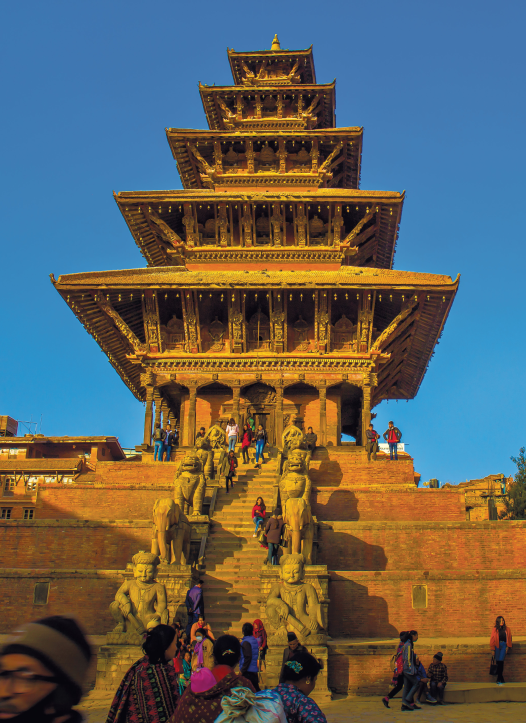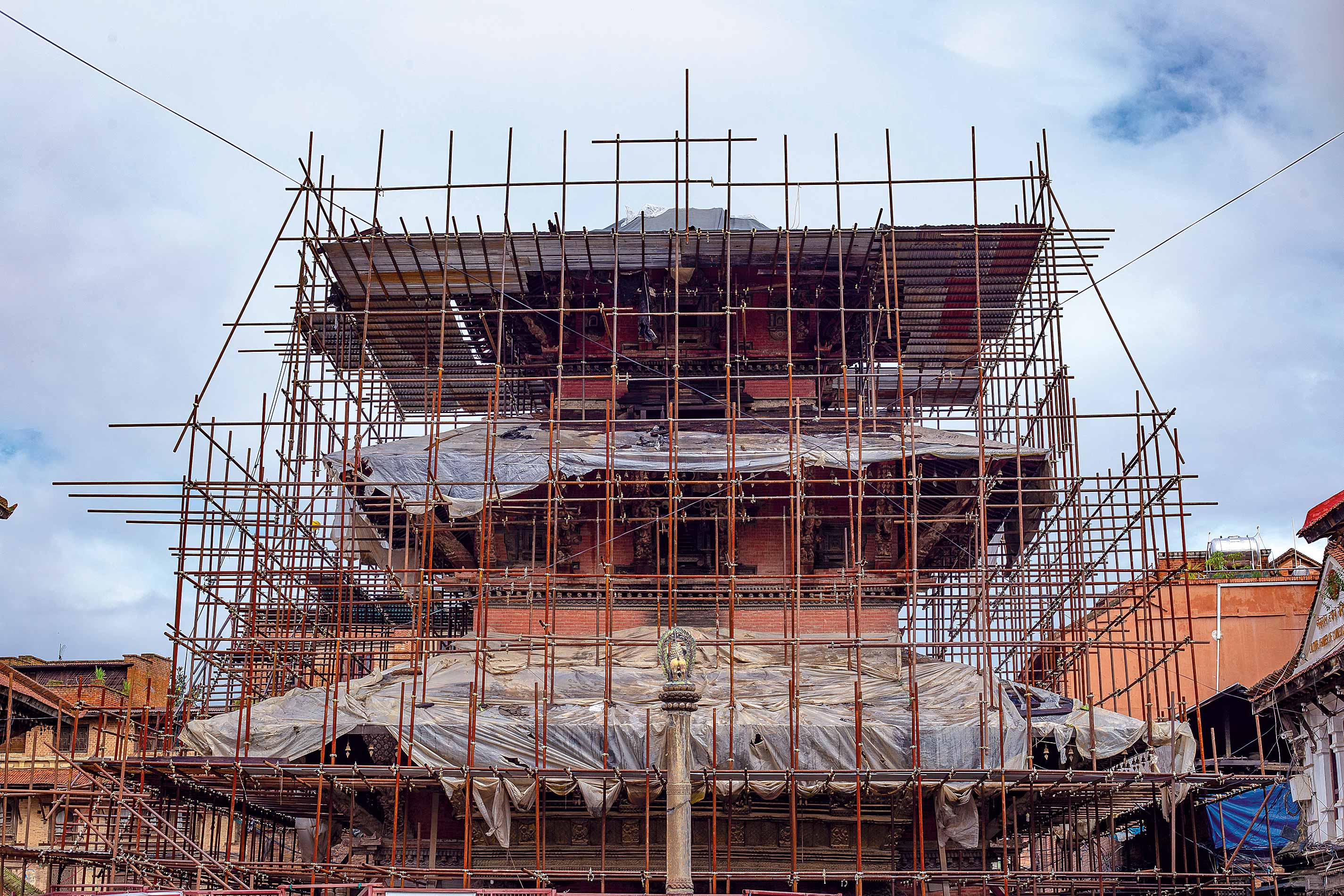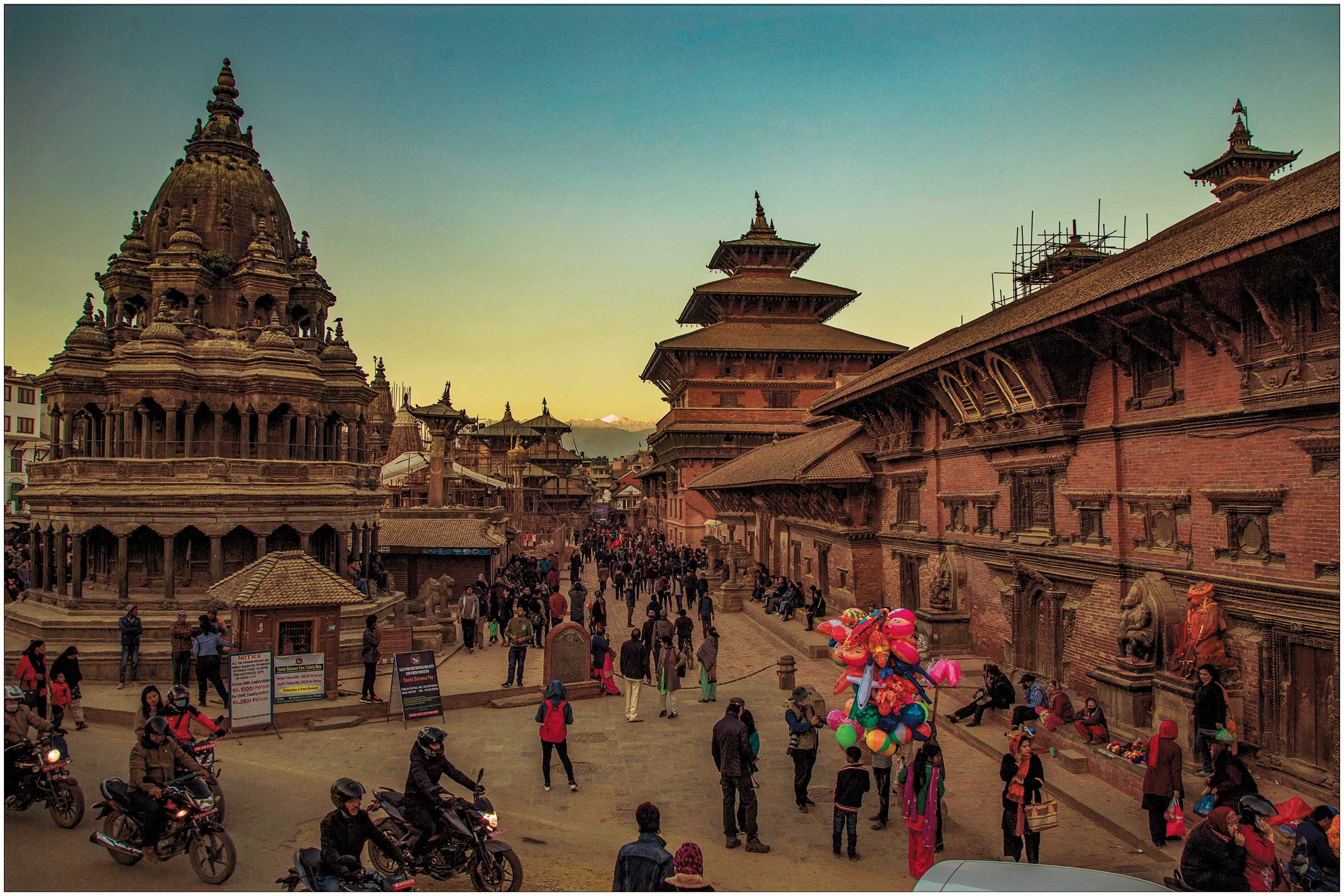Those were the days when the upscale residential district that includes what is now known as ‘Jhamel’ was so desolate that wolves and foxes roamed around freely once the sun went down. Among the brave few who moved to this area then was a family from Jhochen, more famously known as Freak Street. The lady of the family, then perhaps in her thirties, was a deeply religious sort, and various gods visited her in her dreams.
One such dream was at a time when one of her sons was suffering from rashes all over his body. She was standing on a podium with the Naag Raja and the Naag Rani (King Cobra and his mate) looking up at her. The Nag Raja had swarthy thighs while the Nag Rani was in a red blouse and had sindoor (vermilion powder) in the parting of her hair. The Naag Raja ordered her to worship a yellow naag near her house with some rice, rinsed three times, dubho (Bermuda grass), sindoor, sugar, butter, and cow’s milk. In addition, water was to be offered 21 times to the Naag Raja, and nine times to the Naag Rani, along with some other essentials and cotton dipped in sindoor. She was to light 108 cotton wicks. Having done all this, the Naag Raja assured her that all her problems would be solved, but that she had to conduct this ritual every month on the auspicious day of Sankranti.
Around 1976-1977, about 15 years after they had moved here, she had another vision, in which a god with sindoor on his thighs and forearms ordered her to build a temple. Not knowing how she would be able to manage the money to do so, her family nevertheless began its construction on a small plot of land they had bought for the purpose. The god had revealed in her dream that it would be completed during the astrological period of bhadra kulpa, during which a king would suffer a premature death. The construction of the temple, Ajima Mandir, began only in 1996.
In due time, it was completed—a three-storied pagoda-style temple with a sattal (rest house) and pati (loggia) on the premises. It was constructed using traditional bricks, tiles, and timber, and with all the customary elements, such as gajur, pataka, and torana. Of course, during its making, certain specific rituals had to be followed; after all, it was a temple. A special puja preceded every stage of construction to honor Bhairav Panchali, the presiding deity of the shrine. Numerous animal sacrifices were made.
The story of how the Ajima Mandir came to into existence is not only a most intriguing one, but it is also revealing of the fact that many of the valley’s numerous shrines could also well have been created likewise. It is a fact that many shrines and monuments and festivals are the result of dreams and visions of kings and queens in the ancient days. Likewise, there are others that have been given birth through not-so-ordinary folks like this particular lady, as well as through the efforts of communities and clans and localities.

Unfortunately, unlike the olden days, or more correctly, the ‘golden days’ of yore, when royal decree required that no nearby buildings could be taller than the temple in the area, the latter days have been less favorable in upholding the high stature of shrines. With the result that the Ajima Mandir, a creation of the dedicated endeavor and religious fervor of an ordinary family, is overshadowed by not just taller buildings around it, but in fact, a multistoried apartment complex that towers over everything else nearby, including the Ajima Mandir. Sad but true—visions of a different sort, vouchsafing the greed of man, has triumphed over the saintly vision of a religious soul.










